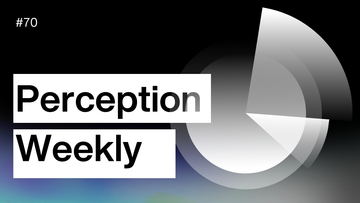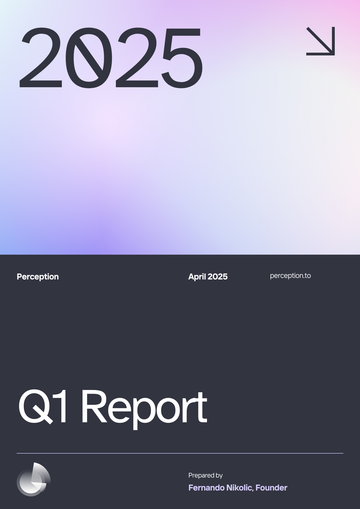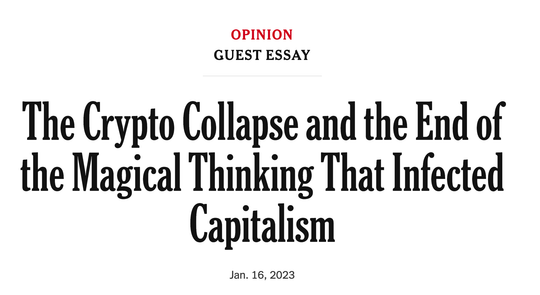Bitcoin’s market sentiment is a popular topic, but many Fear & Greed indexes function as black boxes: they lack transparency, exaggerate sentiment, and rely heavily on social media hype.
In the past few weeks, mainstream indexes have displayed extreme lows—as dramatic as 15 on their scales—painting an overly pessimistic picture.
So we decided to take a look, because since we started Bitcoin Perception we decided to approach things differently.
Instead of relying on noisy social data, we focused on quality and transparency:
• 100+ Curated Sources: Trusted financial publications, respected market analysts, and reputable commentators.
• No Bots, Spam, or Grifters: Only authentic, high-signal sources.
• Consistent and Transparent Data: Unlike other indexes, our sentiment analysis is fully transparent and trackable.
Looking at the past 90 days, the Bitcoin Perception Fear & Greed Index has never dipped below 50 on the weekly chart, nor below 40 on the daily.
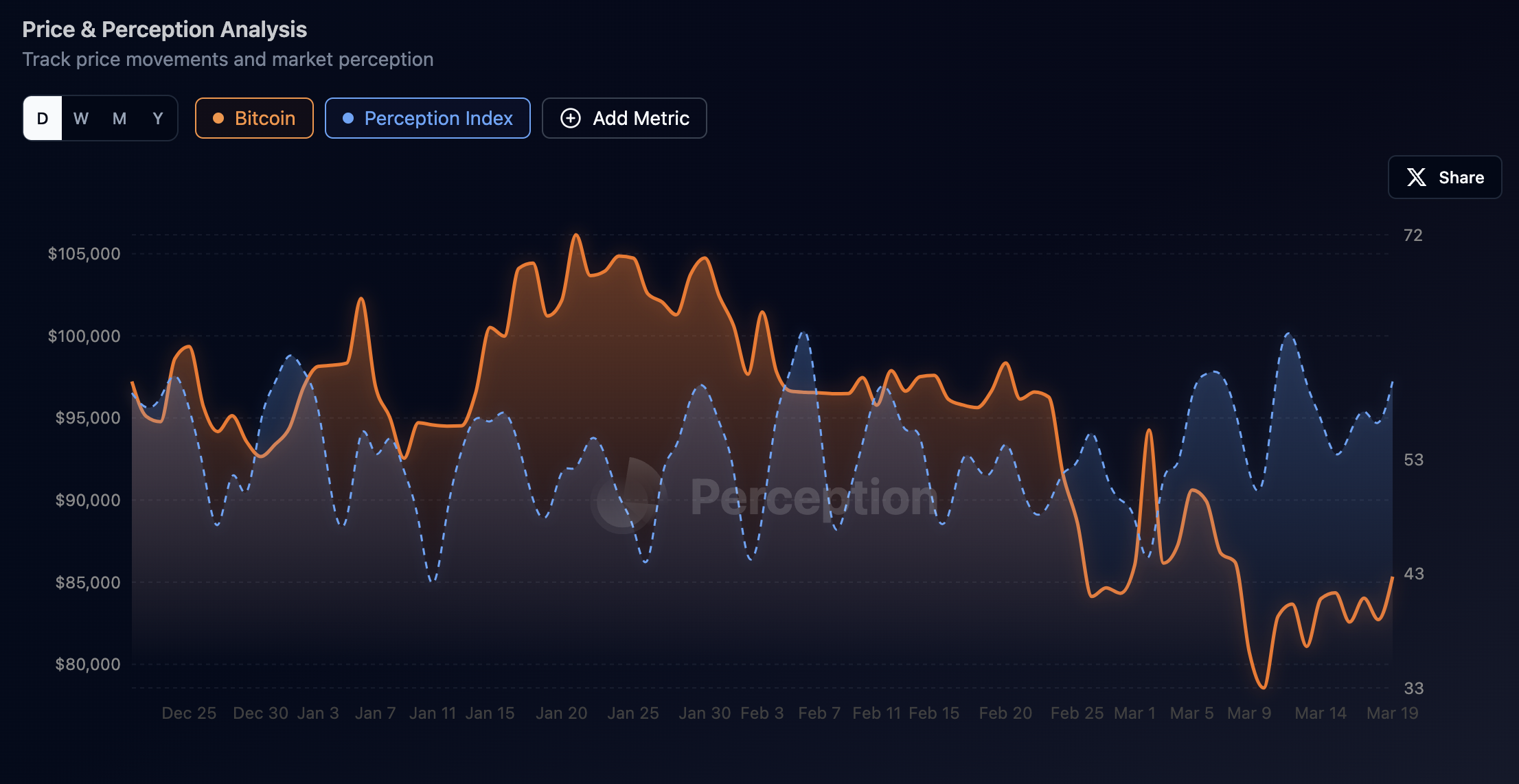
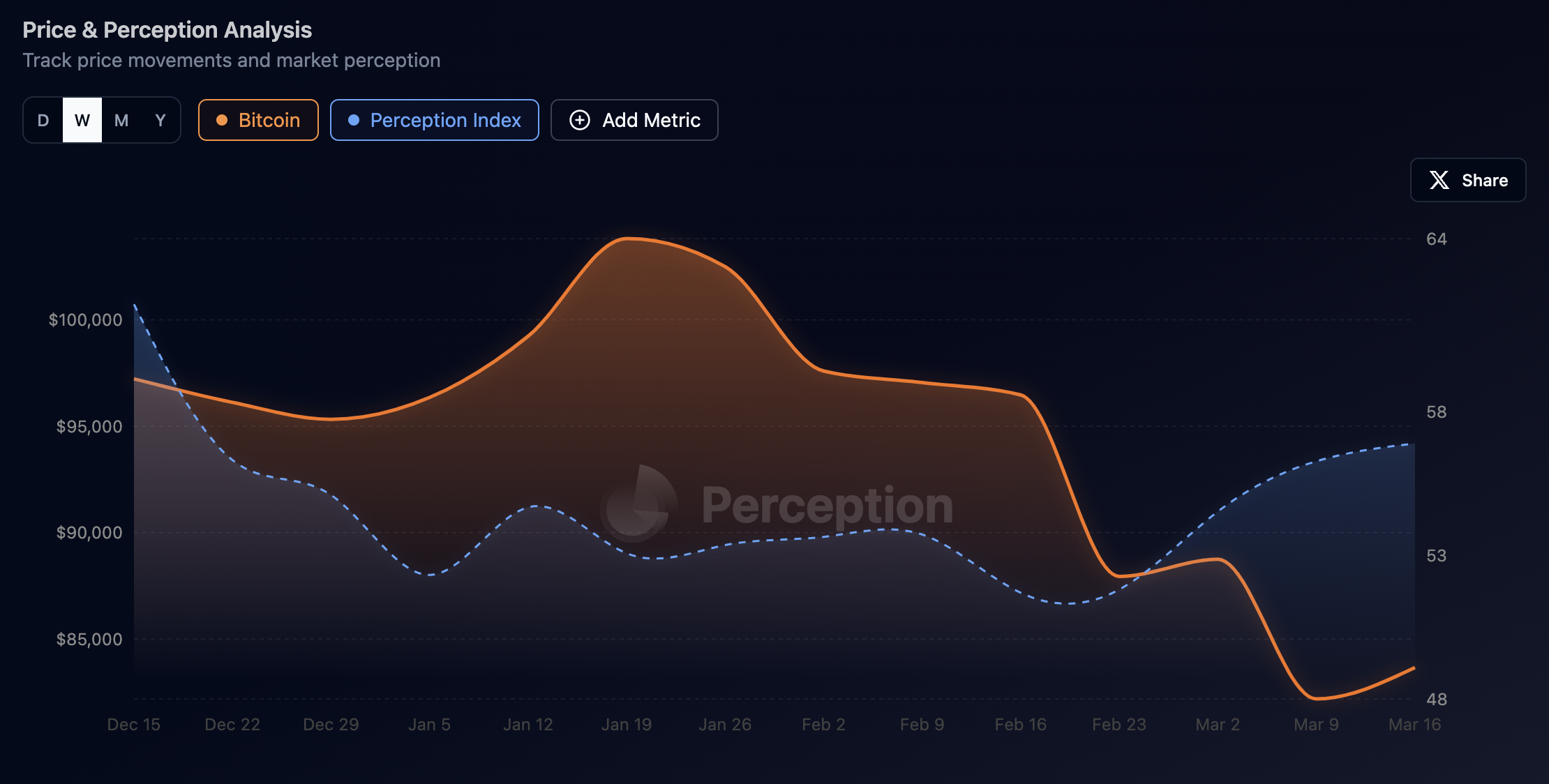
In fact, our data is now signaling that sentiment may be turning upward.
Nice rebound here. pic.twitter.com/P9TFLA2gXj
— Bitcoin Perception 🗞️ 📊 (@BTCPerception) March 17, 2025
We are so back. pic.twitter.com/1N6bqgLTQj
— Bitcoin Perception 🗞️ 📊 (@BTCPerception) March 19, 2025
Market Sentiment and Trump’s Inauguration: A Deeper Look
Looking back and analyzing the past three months, an interesting pattern emerged around January 20—the day Trump assumed office.
Bitcoin-related conversation volume surged immediately after, reaching a record high on January 24 (roughly double previous volumes).
Remarkably, it has remained relatively stable ever since.
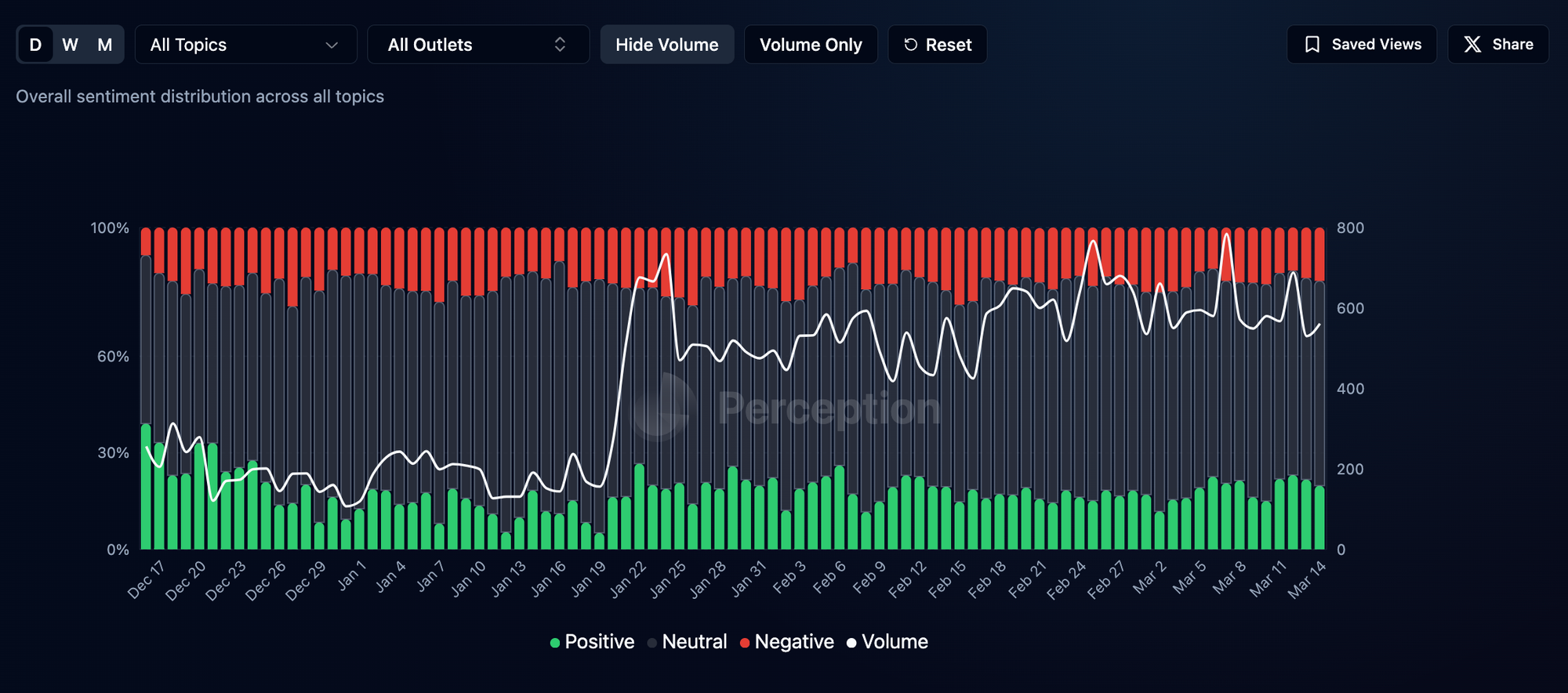
• Before the inauguration (December 19–January 19): We saw a concentrated burst of negativity, with 6 separate days showing more than 20% negative sentiment.
• After the inauguration (January 20 onwards): Although negative sentiment appeared on 8 days, it was spread out and accompanied by more consistent positive commentary.
In short, the narrative of an ongoing bear market post-inauguration doesn’t quite fit our findings.
The real “bearishness” peaked prior to January 20.
Since Trump’s entry into office, the overall trend in sentiment has actually been improving, despite occasional spikes of negativity.
The Media Landscape: Financial vs. Legacy
Surprisingly, even financial media outlets—usually expected to remain neutral—became notably negative in the three weeks leading up to Trump’s inauguration.
Once the event passed, their attention dropped dramatically, with lower volumes of coverage overall.
Yet, when they did cover Bitcoin, their tone shifted from neutral to more polarized opinions.
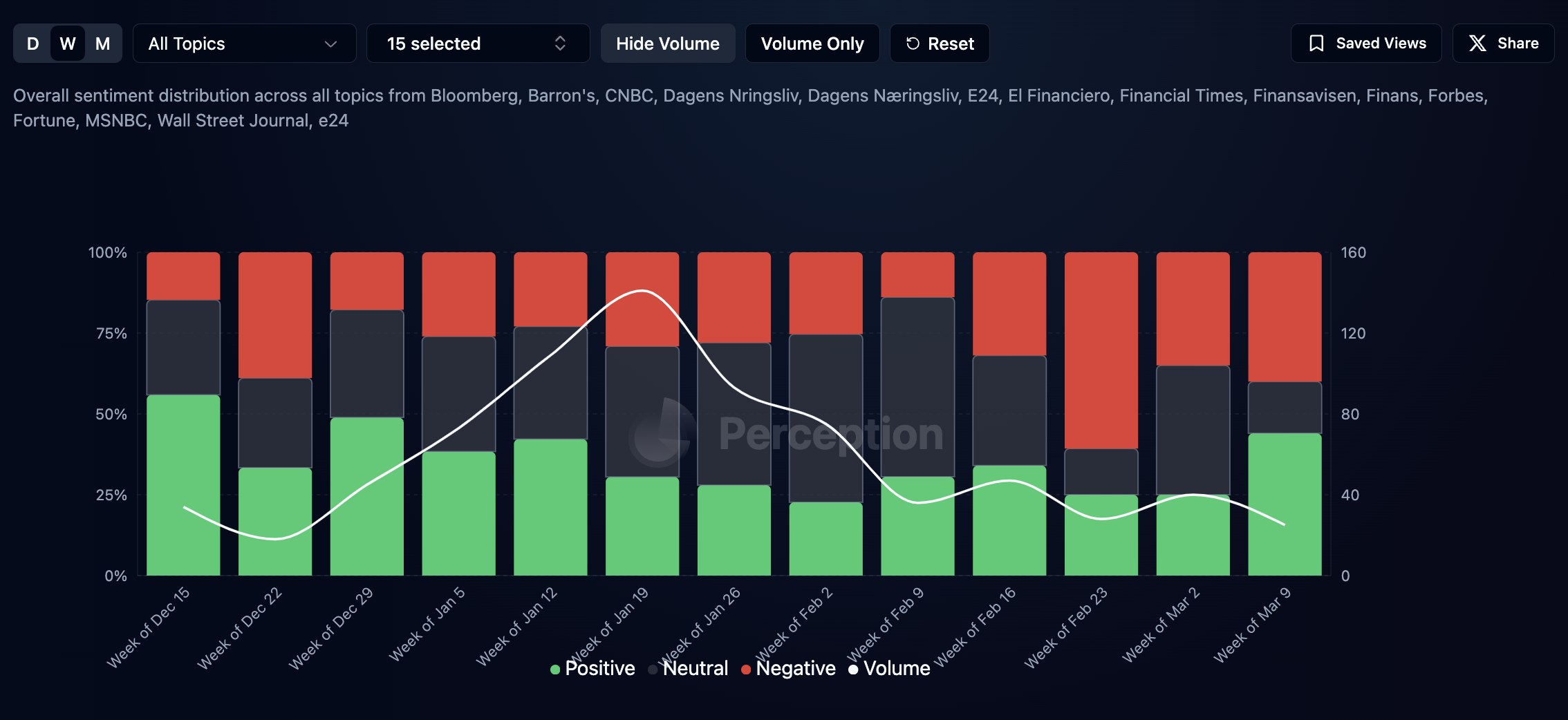
Legacy media, however, has grown increasingly negative overall.
It appears that as Trump’s administration moves toward clearer regulations supportive of Bitcoin, traditional media outlets have intensified their criticisms—possibly reflecting broader political biases rather than genuine market analysis.
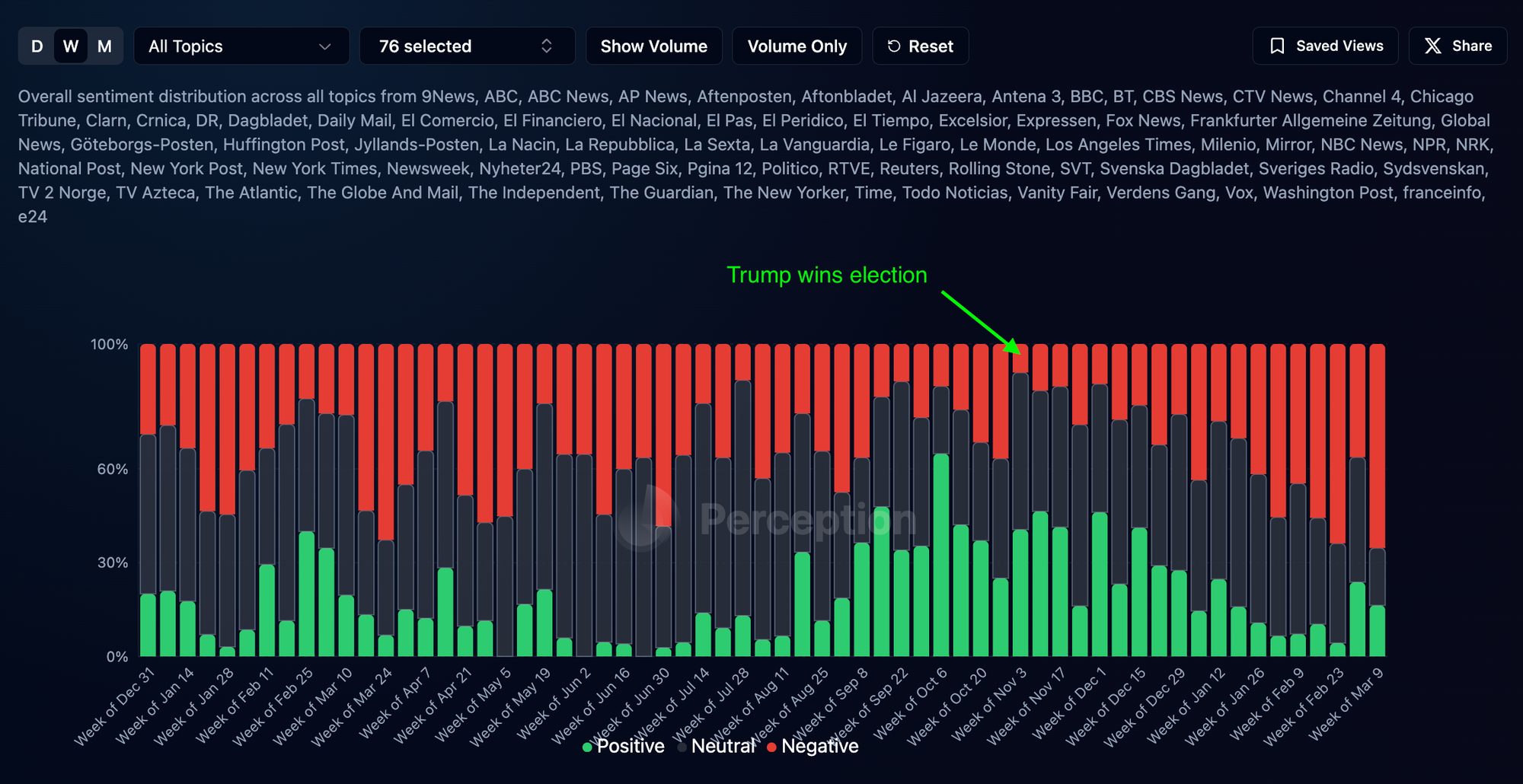
So, What Does This All Mean?
Our findings reveal a clearer picture of Bitcoin sentiment than conventional indexes suggest.
Political events clearly influence short-term volatility in media coverage, but beneath the surface, sentiment remains surprisingly stable and is actually leaning positive again.
For you, the reader, the takeaway is clear: beware of sentiment tools that exaggerate hype and fear.
Transparent, curated data can offer far more accurate insights. The improving fundamentals of Bitcoin adoption, regulation, and institutional interest remain intact, despite occasional media-driven turbulence.
Disclaimer:
This report is for informational purposes only and is not investment advice. Sentiment analyses are interpretations subject to change with new data.


